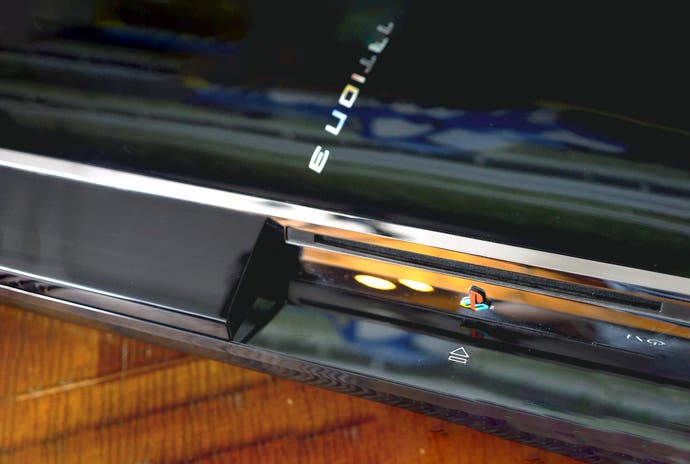PlayStation 3: chasing the 1080p dream, part three - Gran Turismo 5 and the indie explosion
2010-2012: Stereo 3D enables more 1080p gaming while smaller scale titles start to shine.
Welcome to the third part in the biggest DF Retro episode we've ever produced - a year-by-year look at how 1080p gaming fared on the PlayStation 3. Launched in 2007 touting its then-exclusive HDMI digital interface, Sony layered full HD gaming on top of its Cell processor and RSX 'Reality Synthesizer' as key selling points for its third generation console. Of course, we all know how that turned out - both Sony and Microsoft machines routinely ran the most advanced titles at sub-720p resolutions, often with questionable performance, so what happened to the 1080p dream?
In the first two parts of John Linneman's investigation, we've covered off the first four years of the Triple's lifecycle and moving into 2010, the overall fortunes of the PlayStation 3 continued to improve. The platform holder released - what was then - the most advanced motion controller in the console space, backed up by experiments with stereoscopic 3D, which turned out to be a short-lived but still formidable pairing. Combined with a strong E3 showing, PS3 was looking good.
However, it's fair to say that it was a fallow year for 1080p gaming on the system, with only Scott Pilgrim Saves The World's razor-sharp pixel art upscaling, Castle Crashers and Soldner X2's 3D/FMV stylings accommodating full HD output - alongside a wonderful Monkey Island remaster.
However, the 1080p dream would not die, kept alive by the release - finally - of Gran Turismo 5. Half a decade in development, there was the sense that Polyphony Digital pushed hard with this one.- perhaps too hard. Beyond the whole premium car/standard car divide (the latter essentially being slightly enhanced PS2 models), Polyphony's ambition was not matched by the power of the console. 1080p rendering was realised at 1280x1080 with horizontal scaling, screen-tearing was ever-present on demanding courses, while stages with dynamic weather and lighting looked ugly with low resolution transparency effects and shadows. An alternative 720p mode, accessed via the console's video output setting, increased resolution to 4x MSAA from its 2x equivalent and increased performance.
It's fair to say that it was a fallow year for 1080p gaming, but 2011 saw a big improvement - even as Sony itself reeled from the massive PSN hack and subsequent shutdown. Of course, the quality varied - the Spliter Cell Trilogy's HD mode was a low frame-rate embarrassment, in stark contrast to the brilliant conversion work for Ready at Dawn's God of War Origins collection, which expertly reworked its PSP titles to full HD resolution at 60fps, with optional stereoscopic 3D modes, no less.
The quality didn't stop there: Rayman Origins saw a brilliant deployment of 1080p60 2D art that still looks brilliant today while Daytona USA provided a nigh-on definitive full resolution, full frame-rate remaster of the classic arcade machine - marred only by poor implementation of mip-mapping. Pixel Junk Shooter 2 and Pixel Junk Side-Scroller continued Q-Games' run of exceptional 1080p60 titles, while Bluepoint's Ico also impressed - let down only by a 960x1080 rendition of Shadow of the Colossus (perfectly understandable, if you think about how bad performance was on the PS2 original).
Our third chapter of our voyage through the PlayStation 3's full HD library encompasses 2011 - and the beginning of change. Sony itself led the charge with the exceptional, if not wildly successful, PlayStation Vita, with Nintendo following up with its 'challenging' Wii U console. The new hardware didn't stop there, with Sony refreshing PlayStation 3 with its third and final 'Super Slim' iteration - an upgrade that history isn't kind to, owing to its cheaper construction, ugly looks and cheap BD drive loader.
The machine's full HD offerings started to scale back, mostly encompassing smaller scale games with less ambitious visuals, but bucking the trend we had Motorstorm Apocalypse, embracing 1280x1080 rendering at 30fps, with an optional and technically impressive stereoscopic 3D mode (check out our full Motorstorm retrospective for more on this brilliant series).
In terms of smaller scale projects, there was still plenty of quality to enjoy - not least the arrival of Okami HD from Capcom. At the time there was discussion of internal 4K rendering, downscaled to 1080p, but based on what we're seeing today, our contention is that we're actually seeing full HD rendering with 4x MSAA used to deliver an exceptionally clean presentation. It's 60 frames per second too, albeit with some minor drops and resultant screen-tearing. Also worth checking out are Sega's remasters of Model 2 arcade classics Virtua Fighter 2, Fighting Vipers and Sonic the Fighters all presented at full HD resolution, albeit in a 4:3 aspect ratio.
Next week, we'll present the final chapter in his full HD voyage, encompassing the final years of the PlayStation 3, with 1080p offerings covering 2012 to 2015 - well into the lifecycle of the PS4. However, if you're enjoying this series and want to support our continuing expansion of DF retro, do consider the DF Supporter Program. To put it frankly, it's the backing from supporters of John's work that makes these expansive projects possible. In addition to major episodes, there's additional retro content including interviews, retro Q+A and pick-ups specials - all on top of the early access, bonus materials and more offered by the standard and premium supporter tiers. Join us!












